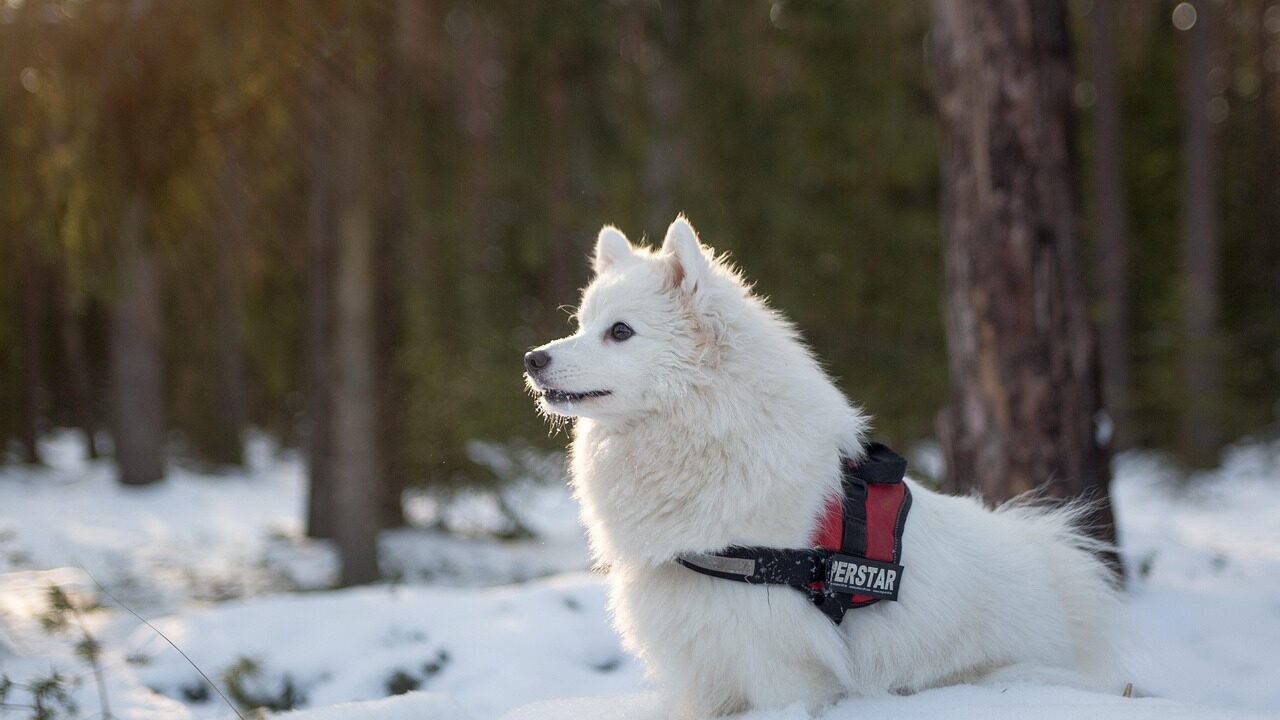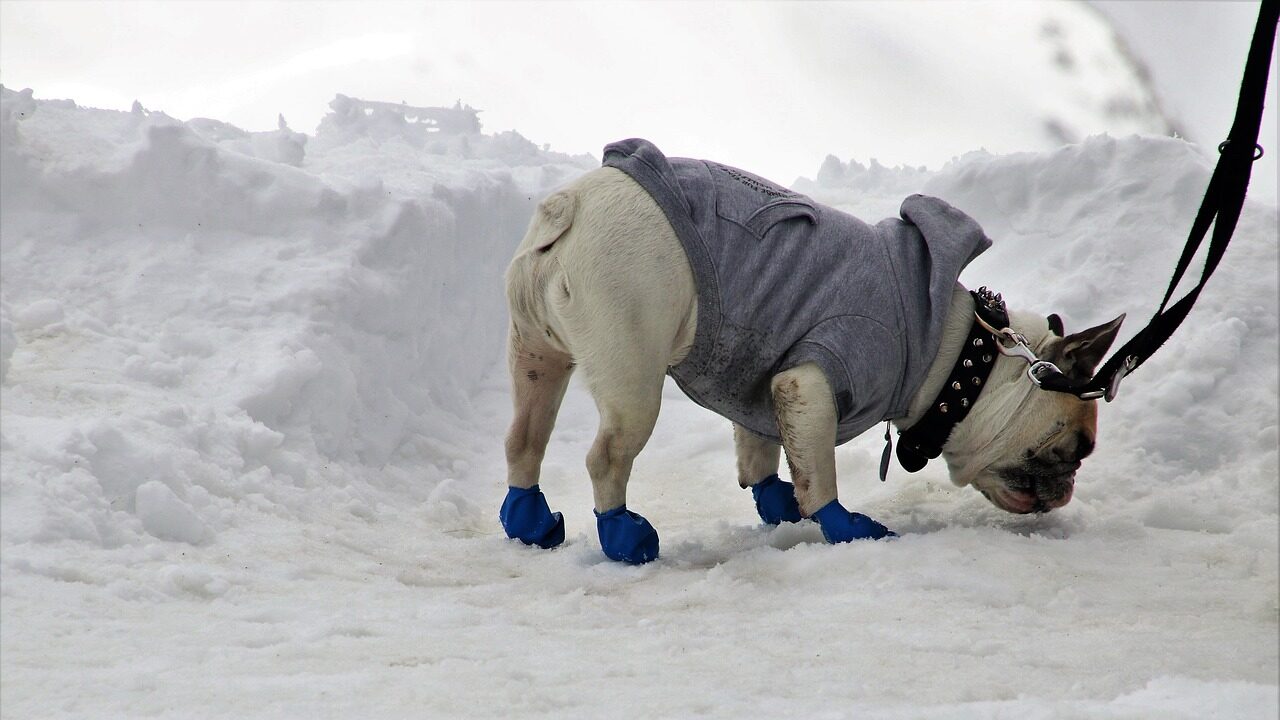As the mercury drops and landscapes transform into winter wonderlands, our loyal canine companions still long for their outdoor adventures, regardless of the chill. Harsh winter weather can be tough on dogs. However, with the right attire, they can romp through the frosty months and be both safe and cozy. To ensure our four-legged friends are appropriately bundled up, it’s essential to consider the material, design, and practicality of their winter gear.
Whether your pooch is a burly snow-lover or a petite pup that shivers at the sight of a snowflake, choosing cold-weather apparel tailored to their needs makes all the difference. From weatherproof jackets to water-resistant booties, and protective paw waxes to thermal pajamas, dressing your dog for winter is about more than just fashion—it’s about their health and happiness. Let’s dive into the essentials of a winter wardrobe that will keep tails wagging even in the frostiest conditions.
Key Winter Wear for Outdoor Protection
As pet parents, we know the drill when the temperature drops: we layer up and brace ourselves against the chill. But it’s not just us feeling the cold; our four-legged friends need protection from harsh winter weather too. Pet clothing is nothing new; there’s a reason why this market was valued at $5.56 billion in 2023. And this value is expected to reach $8.97 billion in 2032.
To keep dogs warm and comfortable all season long, the right winter gear is a must. From weatherproof jackets to protecting their delicate paws, here’s a lineup of key winter wear essentials that will allow you to rest easy, knowing your pup is snuggled up against the elements.
Weatherproof Dog Jackets: Features and Fit
Imagine stepping out into the cold without your coat. Pretty uncomfortable, right? Well, dogs can feel the chill too! A weatherproof and windproof dog jacket is essential for those chilly winter walks, allowing pups to play in the snow without turning into a doggy icicle. These jackets should be both warm and lightweight, ensuring your dog stays toasty without being weighed down. Features like hook and loop closures keep the coat in place, while a small slit for a harness is a practical touch for secure strolls.
When selecting the perfect jacket, consider these key factors:
- Material: A durable, weatherproof outer layer with a warm liner is ideal.
- Design: Jackets with adjustable straps or closures provide a snug fit, preventing any drafty spots.
- Practicality: Easy to put on and take off, and machine washable for convenience.

Water-Resistant Booties: Importance and Selection Criteria
No one likes cold, wet feet, and that includes our canine companions. Whether your pup is playing outside in the backyard or going on one of those community dog walks, they need high-quality water-resistant dog booties to shield their paws from the snow. Insulating materials keep those tootsies warm. Search for booties that are waterproof and have non-slip soles to prevent slipping on ice. Stretchy fabric ensures a comfortable fit, but make sure they’re snug so they don’t come off mid-play.
Here are some tips for choosing the best booties:
- Measure your dog’s paw correctly to avoid tight or loose fits.
- Watch for durable, yet comfortable materials that won’t restrict movement.
- Consider reflective or bright colors for added visibility.
Safe Steps with Paw Protection: Paw Waxes and Balms
Paw protection doesn’t stop at booties! Paw waxes and balms are stellar sidekicks in the fight against frosty ground. Acting as a barrier against ice, snow, and even harmful chemicals, they keep your pup’s paws in prime condition. Look for waxes that absorb quickly and create only a thin layer— this way, they don’t feel too goopy, and your dog’s paws can still breathe.
An extra tip to paw-fect protection:
- Choose organic and non-toxic options to ensure safety in case your dog licks their paws.
Ensuring Visibility: The Role of Light-Up Collars and Reflective Gear
Shorter days mean less daylight, and that can be hazardous for our pups. In fact, domestic pets like dogs make up 95% of animal-vehicle collisions. This is why a dog collar light or reflective gear isn’t just a fancy fashion statement. It’s a pivotal part of your dog’s safety gear. Rechargeable lights and reflective materials make sure your dog is visible to you and others, reducing the risk of accidents during those early morning or late evening outings. Let’s keep them safe and seen!
A few things to enhance your dog’s visibility:
- Look for adjustable collars that can fit over coats and sweaters.
- Choose lights with long battery life for those extended winter adventures.
| Winter Item | Features to Look For |
|---|---|
| Dog Jacket | Weatherproof, Lightweight, Harness Slit |
| Dog Booties | Water-resistant, Non-slip, Comfortable Fit |
| Paw Protection | Quick Absorption, Thin Layer, Non-toxic |
| Visibility Gear | Rechargeable, Reflective, Adjustable |
Thermal Comfort for Your Canine Companion
Maintaining your furry friend’s warmth during the cold months isn’t just about throwing on the thickest coat you can find. The key is ensuring their comfort and safety under their layers. Appropriate dog winter wear bolsters their natural defenses against the cold without restricting their movement or causing them any distress. Remember, the aim is to mirror the snug feeling they’d have if they were cozied up indoors, even when they’re out braving the frosty weather.
It’s essential to offer a variety of options for different levels of cold. Starting from insulated weatherproof and windproof jackets that are lightweight, to paw protection that shields sensitive pads from the ice, snow, and deicing chemicals—each item serves a purpose. Factor in practical features like easy hook and loop closures, harness slits, and non-slip, water-resistant booties, and you equip your pooch with a virtual shield against the elements.
Sweaters and Coats: Balancing Warmth and Mobility
When temperatures drop, it’s time to pull out the warm gear. However, not all warm wear is created equal. A snug wool or fleece sweater offers just enough warmth for a chilly evening stroll, while heavy-duty coats are perfect for snowy adventures. Consider several factors as you shop:
- Materials – Fleece, wool, and lightweight synthetic fabrics work best.
- Design – Ensure the sweater or coat allows for freedom of movement.
- Practicality – Machine-washable fabrics and built-in D-rings for leash attachment are handy.
Dog coats often come equipped with slits for harnesses and use convenient closures to keep the garment in place. The right coat or sweater can make a world of difference to your pup’s comfort during the wintry weather.
Indoor Warmth: The Necessity of Dog Socks and Thermal Pajamas
Let’s not forget about the indoors. Those hardwood floors can feel like ice beneath sensitive paws. Here’s where dog socks step in—literally. Soft, stretchy, and preferably skid-proof, they create a cozy barrier against cold flooring. Thermal pajamas, covering the arms, legs, and torso, are excellent for ensuring your dog stays toasty throughout the night or during laid-back days at home.
When choosing PJs, seek out those with soft fabrics like fleece or velvet, and always prioritize a good fit—snug but not tight. It’s the canine equivalent of slipping into a warm pair of socks and some comfy jammies after a day out in the cold.
| Indoor Comfort | Considerations |
|---|---|
| Dog Socks | Skid-proof, Soft Material |
| Thermal Pajamas | Snug Fit, Warm Fabric |
Special Considerations for Vulnerable Dogs: Age and Breed Specifics
Particular attention must be paid to vulnerable dogs, such as the very young, the elderly, and certain dog breeds that are more sensitive to cold. These dogs require extra care and more layers to maintain their body temperature. Knowing your dog and observing how they react to colder climates is crucial. Using non-toxic paw wax can help with traction indoors and protect their paws from the elements outside.
Remember to keep an eye out for signs that your dog might be feeling the cold, such as shivering or reluctance to go outside. Monitor them closely, and tailor their winter wardrobe to offer the best protection possible based on their individual needs and sensitivities.
| Dog Group | Additional Needs |
|---|---|
| Puppies/Seniors | Extra Insulation, Indoor Warmth |
| Breeds Sensitive to Cold | Sweaters, Booties, and Paw Protection |
Practical Tips for Winter Dog Apparel Usage
While making sure our furry friends are stylishly suited up for winter is fun, it’s also super important to focus on the practical side of things. These practical tips will ensure your dog stays cozy, comfortable, and safe during the chilly season.
Choosing the Right Size and Material for Your Dog’s Apparel
Getting the fit right is essential when picking out your dog’s winter wardrobe. The right size means your dog will be able to move freely without the apparel being too tight or too loose. Remember:
- Weatherproof and windproof dog jackets should be warm yet lightweight, especially if your dog will be active outdoors.
- Many jackets come with hook and loop closures, which makes them adjustable and easy to put on.
- Look for a small slit on the back of the jacket for the leash if your dog wears a harness underneath.
- Select materials that are machine-washable and comfortable, like wool or fleece for sweaters.
Keep in mind that the material should suit the level of cold your dog will be facing. If you live in an area with very harsh winters, you’ll want to go for something that offers substantial protection like heavyweight fleece or insulated coats.

Maintenance and Care for Longevity of Winter Gear
Just like any piece of clothing, dog apparel needs a little TLC to last longer. High-quality winter gear can be an investment, so proper care will ensure it stays in good shape for many winters to come. Some pointers on maintenance:
- Follow the washing instructions. If it’s machine-washable, great, but if not, a gentle hand wash may be necessary.
- Storage is key! Once winter is over, clean the apparel according to instructions and store it in a cool, dry place.
Dirt can degrade the materials over time, so keeping the winter wear clean not only benefits your dog’s health but also the durability of the materials used.
When to Bundle Up: Understanding Your Dog’s Cold Tolerance
Not all dogs need the same kind of protection in winter. Factors like age, breed, and coat type can affect your dog’s sensitivity to cold. A husky might love frolicking in the snow with minimal gear, while a chihuahua might shiver at the first gust of chilly air. Tailor your dog’s winter gear to their needs by considering:
- Their breed and coat type. Short-haired and small breeds generally need more protection.
- If your dog is very young or getting on in years, they might have more difficulty regulating body temperature.
- Physical condition. Dogs with health issues or less body fat might feel the cold more intensely.
Transitioning to Indoors: Cleaning and Storage Post-Usage
After each chilly outing, it’s a good idea to give your dog’s apparel the once-over. Snow, sleet, and street grime can cling to coats and booties. A quick wipe down or wash will prevent your home from getting messy and keep the gear fresh for next time.
When winter ends, give everything a final clean and store all items in a dry place, away from direct sunlight to prevent fading. This will help maintain the quality and functionality of the apparel for next season.
Monitoring for Discomfort: Signs Your Dog May Not be Weather Ready
Our pals can’t tell us in words when they’re not feeling comfy, so it’s up to us to read the signs and understand their body language. Keep an eye out for:
- Whining or shivering — it might be a sign that your dog is not warm enough.
- Chewing at their sweaters or booties could indicate an improper fit or irritation.
- General reluctance to move or walk might mean that they’re not feeling the gear.
Understanding your dog’s behavior and needs will ensure they remain comfortable and safe throughout the cold winter season.


